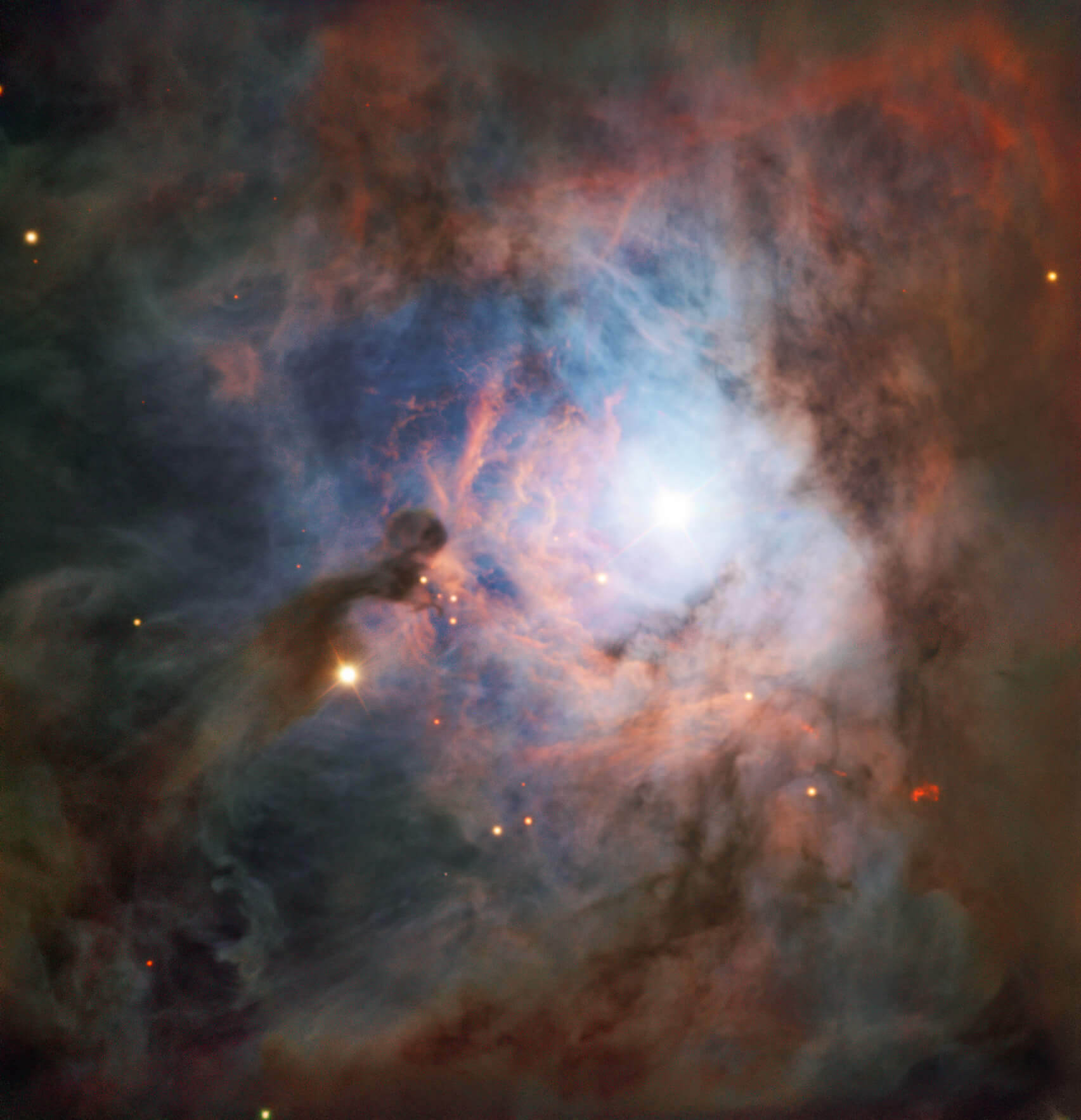M 42 or the Orion Nebula is a complex region of active star formation, where some hot and young stars merge together. Consisting of glowing gas and dust, the nebula is part of a much larger area — the Orion Cloud, which also includes the Horsehead Nebula, located south of Orion, the easternmost star in the Orion belt.
The red glow in the Orion Nebula is due to ionized hydrogen. Located deep in the trapezium nebula is a dense group of the four brightest stars of the Orion Nebula. The trapezoid can be seen in a small telescope, but the Orion Nebula itself can be seen with the naked eye in the form of a fuzzy spot, which has an apparent magnitude of 4.0. M 42 is located in the Orion arm of the Milky Way galaxy and is 1600 light-years away from Earth.
To the north of M 42, M 43 is located, which seems to be separated from M 42 by a dark strip of dust. However, M 43 is physically part of the Orion Nebula.
The blue nebula above the Orion Nebula is an interstellar cloud of dust that reflects light from hot young stars. It consists of three regions, known as NGC 1977, NGC 1975 and NGC 1973, which are physically connected to the Orion Nebula and lie at approximately the same distance.
Take a close look at the photo of the Orion Nebula below the Orion Belt, or use the site’s online telescope and 3D models, which display the stars of galaxies and famous high-quality constellations. Do not forget to use a star map in independent searches.
Orion constellation is one of the most recognizable combinations of stars in the night sky. People noticed it at least tens of thousands of years ago, and most likely, much earlier. Chinese astronomers called this constellation Shen, literally three stars, because of its three bright stars in a row, forming the Orion Belt. The ancient Egyptians imagined the Sah and Sopde gods at this place, the incarnations of Osiris and Isis, respectively, while the Greek astrologers saw a brave hunter with a raised sword above his head, ready to strike, that is, Orion.
But apart from the mythology, Orion is a wonderful part of the sky. The picture presented on the Very Large Telescope (VLT) of the European Southern Observatory (ESO) as part of the ESO Space Treasures program shows one of the largest reflective nebulae in the sky – NGC 2023. It lives in the center of the constellation at a distance of about 1.5 thousands of light years from Earth and is located next to the well-known Nebula Horsehead and Flame.
Reflective nebulae are clouds of interstellar dust, reflecting the light of sources of light shining nearby or inside them, just as fog disperses the light of car headlights. In this case, NGC 2023 is illuminated by a massive young star HD 37903, which is several times hotter than the Sun.
Such nebulae are often the places of birth of stars and contain ragged gas clouds that are significantly more dense than the environment. Under the action of gravity, these clouds attract each other and merge, which leads to the formation of a new star. So after a few million years, another star may appear in the Orion Belt!
Magnificent Orion Nebula
Click To Tweet
The post Magnificent Orion Nebula appeared first on Upcosmos.com.
